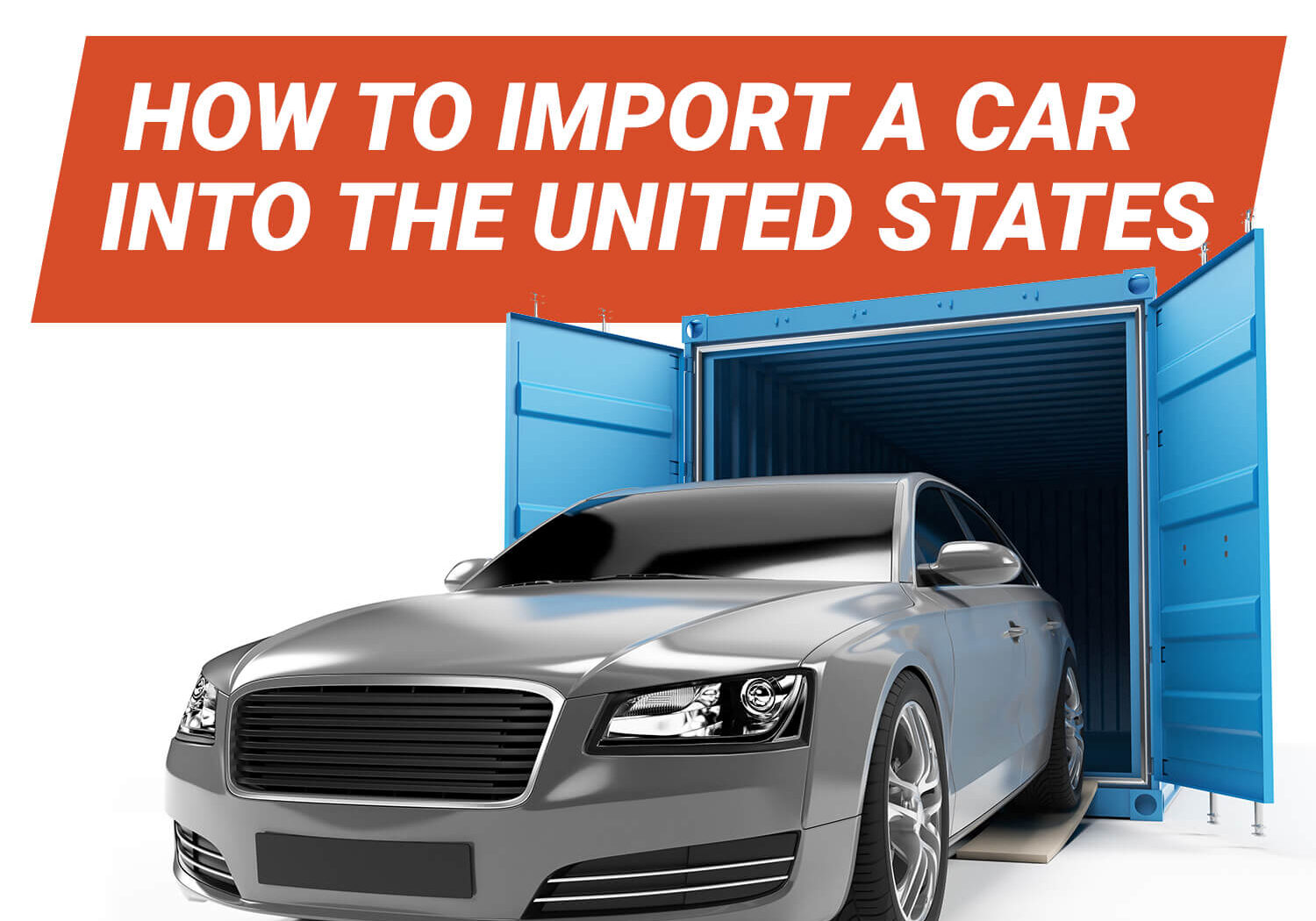How To Import a Car into the United States
Discover everything you need to know about the cost to import a car to the USA. From shipping fees to import duties, this comprehensive guide provides valuable insights and tips to navigate the process seamlessly.
Updated: August 16, 2023 // Did You Know?

Home // Did You Know? //
Importing a car to the United States requires careful consideration and adherence to specific regulations. The Environmental Protection Agency and the Department of Transportation have made rules about safety and pollution for cars that are less than 25 years old. Classic automobiles and vehicles older than 25 years are sometimes exempt from these rules.
Note: Some countries may not be able to get any cars at all. This guide will give you all the information you need, as well as tips from experts in the field, to get through the process of buying a car.
Related: How to Import a JDM Car to the USA
Understanding Import Regulations
Before you start the process of shipping something, you should learn about the rules set by the Department of Transportation and the Environmental Protection Agency. These laws strive to guarantee that imported automobiles are safe and meet US requirements.
25-Year Import Rule: Good news if your car is over 25 years old. Vehicles less than 25 years old must meet these standards, while classic cars and those over 25 years old may enjoy exemptions.
Shipping Considerations
Once you've determined the eligibility of your vehicle for import, the next step is to arrange for shipping. There are two primary options: shared containers and individual containers. Shared containers are more cost-effective as they allow multiple vehicles to be transported together. However, if you prefer greater control and exclusivity, an individual container might be the better choice.
Insurance Coverage
While shipping companies typically carry liability insurance, it is advisable to obtain additional auto insurance to safeguard your vehicle during transit.
Step-by-Step Importation Process
Research and Choose a Shipping Company: Thoroughly research and select a reputable shipping company with experience in car importation. Seek recommendations, read reviews, and compare services offered. A reliable shipping partner can streamline the process and ensure a smooth importation experience.
- Prepare the Vehicle for Shipping: To comply with customs, clean your vehicle's underside before exporting. This prevents pests and pathogens from entering the US.
- Inform Customs of the Vehicle's Arrival: Notify the customs authorities at your chosen port of entry regarding the anticipated arrival of your vehicle. Providing advance notice enables them to make necessary arrangements for inspection and clearance.
- Gather Required Documents: Collect all the necessary documents for the importation process. These typically include the vehicle's title and registration, bill of sale, shipping documents, and any relevant permits or exemptions.
- Complete Customs Entry Forms: Fill out the required customs entry forms accurately and comprehensively. These forms provide essential information about the vehicle and its importation, facilitating the customs clearance process.
- Pay Duty Fees: Importing a car to the United States incurs duty fees that are typically based on the vehicle's value. Ensure that you are aware of the applicable fees and make timely payments to avoid any delays or complications.
- Be Present to Receive the Car: When your car arrives at the appropriate port, you must be there to accept it.
Modifications and Commercial Importers
In some cases, modifications to the imported vehicle may be required to fulfill US safety and emissions laws. If such modifications are required, it is better to seek the assistance of an independent commercial importer. These experts specialize in ensuring that automobiles satisfy the relevant specifications and can successfully help you through the modification procedure.
Cost Considerations
The cost of importing an automobile from Europe to the United States is determined by a number of variables. The entire cost is affected by vehicle size, shipping container type, distance, and shipping route. To correctly estimate the overall cost of the importation procedure, carefully assess these elements and acquire quotations from shipping firms.
Cost to Import a Car to the USA: 5 Key Factors
Importing a car involves a multitude of factors that influence the overall cost. Here are the key aspects to consider when calculating the expenses associated with bringing a vehicle into the USA:
1. Vehicle Value and Model
The value and model of the car you intend to import are significant factors that impact the overall cost. Generally, higher-priced vehicles attract higher import duties and taxes. Additionally, the age of the car can also influence the import process, as some models may be subject to specific restrictions or regulations.
2. Shipping Costs
Shipping your car to the United States is a critical stage in the import process. Prices are determined by a number of factors, including:
- Distance: The distance between the origin and destination affects the shipping expenses.
- Shipping Method: The choice between container shipping or roll-on/roll-off (RO/RO) shipping affects the cost. Container shipping provides better protection but is typically more expensive.
- Vehicle Size: Larger vehicles require more space on the carrier vessel, which can increase shipping costs.
- Origin and Destination Ports: Some ports have higher fees than others, so the choice of ports can impact the shipping expenses.
3. Import Duties and Taxes
Import tariffs and taxes are necessary expenses when importing a vehicle to the United States. The precise amounts are determined on the vehicle's value and the country of origin. The following are the main taxes and levies to consider:
- Customs Duty: A customs duty is paid as a proportion of the vehicle's worth. The charges differ according on the vehicle type, with passenger vehicles normally paying 2.5% duty.
- Merchandise Processing Fee (MPF): The MPF rate is typically 0.3464% of the vehicle's value as of 2023, with a minimum price of $27.23 and a maximum fee of $528.33.
- State and Local Taxes: Depending on the state regulations, you may be required to pay state and local taxes, such as sales tax or use tax, once the vehicle has cleared customs.
4. Compliance and Modification Costs
Environmental Protection Agency (EPA) and Department of Transportation (DOT) safety and emissions guidelines must be met in order to bring a car into the United States.
5. Inspection and Documentation Fees
To import a car to the USA, you must fulfill certain documentation requirements and undergo inspections to ensure compliance with safety and emissions standards. These processes often incur fees, such as:
- Vehicle Compliance Inspection: An authorized inspector will examine the vehicle's compliance with safety and emissions requirements, and the inspection costs will be your responsibility.
- Documentation Fees: Costs associated with preparing and processing the necessary paperwork, including customs forms and import documentation, must be taken into account.
Car Importing Frequently Asked Questions
Most cars can be brought into the USA, but some models may have to follow certain rules and laws.
Yes, the 25-Year Rule.
There are rules about how to bring cars that are less than 25 years old into the USA. But there are some exceptions for cars that are considered antiques or that meet certain standards.
Yes, but not the exact amount.
You can figure out how much the import duties and taxes will be by looking at the value of the car and the duty rates that apply. You can get the most exact numbers by talking to a customs broker or using online tools to help you figure out these costs.
Yes. Hire an expert car importer.
In addition to the standard ways of shipping, you can hire a professional car importer to take care of the logistics of shipping and the paperwork that goes along with it.
When bringing a car into the U.S., there are a number of costs that need to be planned for ahead of time. You may be able to plan and budget better if you know what factors affect total costs, such as the value of the vehicle, shipping costs, import tariffs and taxes, compliance requirements, and other fees. To make sure you follow all the important rules, it's best to talk to a professional customs broker or car dealer. If you plan well and know what you're doing, you can bring a car to the US and start going on exciting trips on American roads.
Disclaimer: The writers of this article may have used artificial intelligence to help them with some of the material. It should not be a replacement for professional help.







